Getting Your Home Ready For Fall
 10 September 2019
10 September 2019 
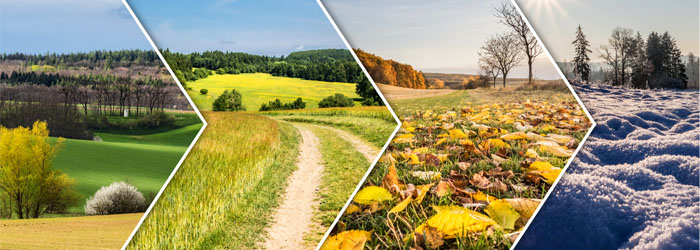
How To Prepare Your Home For Seasonal Changes
There is just a hint of fall in the air! Temperatures are giving an occasional teasing dip below the 100 mark; you can harvest apples in Wilcox and football season is in full swing. It is time to start thinking about the maintenance adjustments in our home as the Arizona desert presents its subtle season change.
Cooling:
The most significant change is the transition away from cooling to heating of our homes.
- It is a good idea to have a bi-annual check-up of your AC unit. Carisa Knight of Rosie Certified Partner Knight Air ConditioningKnight Air conditioning reminds homeowners that air conditioning filters should be checked monthly even during the winter months. Change them if they show dirt and dust. Generally, a 1" paper pleated filter works the best. Be sure to check with your AC company if you are not sure which filter works with your unit.
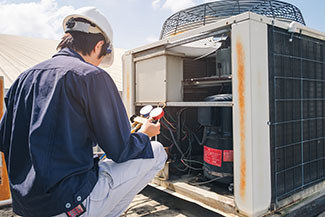
- Evaporative coolers are still preferred by some homeowners. They are a great source of cooling when the humidity is 25% and below. When the days are no longer warm enough to require cooling drain water and thoroughly clean the unit. Covering the unit is not required but can help to extend the life of the unit. Be sure it is clean and dry first!
Heating:
Most people start to think about heating their homes when the morning temperatures hit 60 or below. Carissa says this is also the time to have your annual heating tune-up. If you have gas heat the tune-up should include: a full inspection of the unit including safety check for the gas line and an inspection of the ignitor. An electric heat pump should be serviced once a year as well making sure the reversing valve is working properly
Don't be alarmed if your heater gives off a burning smell when you first turn it on. That is just the smell of dust burning off the unit. You have reason to call if the smell lasts more than about 5 minutes.
Chimney Care:
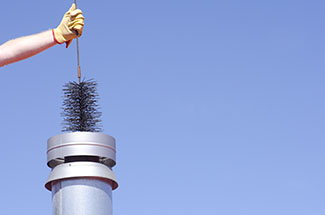
Keeping our fireplaces and chimney's clean is a safety issue. The care is different if you burn wood or if you have artificial logs heated by gas.
- It is recommended that you have the chimney cleaned every 5 years or for every chord of wood you burn-whichever comes first. A build-up of creosote can certainly be a fire hazard. Rebecca of Rosie Certified Partner Arizona Chimney & Air Ducts says a full inspection of your fireplace should include the flu, flue pipe, and damper
- Many homeowners have opted for gas logs due to the growing number of restricted burn days. For gas burning logs it is important to have the gas fittings, the flue, and flue pipe, checked as well. It is a good idea to have the gas log set cleaned, too.
- When gas logs are installed, the flue must always be left partially open in the event of a gas leak.
- If you have a fireplace that is a direct vent, generally behind a glass sheet, it is best to have them periodically checked as well.
Rebecca says a spark arrester or chimney cap is a must for both types of fireplaces. Not only does it keep sparks from ascending the chimney and landing on the roof, but it also keeps birds and rain out of your home.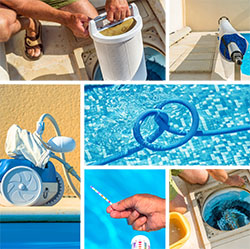
Pool Maintenance
Once the nights start to cool down in the '80s and the kids are back in school it is time to assess your pool motor run time and chemical use. The motor can be reduced by a couple of hours a day during off-peak hours. Also, less chlorine is required in cooler temps. Be sure to test your pool water (or have it tested at your local pool supply) and make sure you are not wasting money by over chlorinating. Be sure to check your pool filters & buckets. Even though monsoons will be over, deciduous trees will be losing their leaves with the potential of clogging the system.
Remember that your water needs to be replaced every couple of years. Traditionally, that means waiting until the daytime highs are below 80.
Irrigation
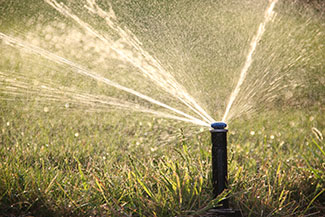
Irrigation can be tricky. Our plants and landscape are living and breathing organisms, requiring closer attention to detail. While there are smart watering systems, the smartest thing a homeowner can do is to become a student of their unique yard. Watering systems should be adjusted every quarter. When the seasons change cutting back on watering frequency should be considered.
According to Bill Jenkins of Rosie Certified Partner Think Green IrrigationThink Green Irrigation, plants and trees still require deep watering regardless of the time of year. Watering should be based on the weather of the season adjusting the frequency but not the length of watering. Watering should reach one to three feet below the surface with larger plants, like trees, needing deep watering to build healthy root systems. As the days and evenings grow cooler, we can begin to back off one watering cycle at a time. Be proactive, not reactive to the plants and their water requirements. When we get a good monsoon storm and rain, it may be possible to turn off the system for a while. Even the increase in cloud cover and humidity can reduce your plants water needs.
###
Photo Credits:
RELATED CONTENT:
- Blog: Know the Costs of Maintaining Your Home
- Blog: 5 Ways to Make Your Desert Yard More “Sustainable”
- DIY Q&A: What Are The Do's and Don'ts of a Drip Irrigation System?
- DIY Q&A: Gas Fireplace Logs: Vented or Vent-Free?
- DIY Q&A: How Can I Do My Part To Conserve Water?
- DIY Q&A: Four DIY Projects That Help Pay for Themselves
- DIY Q&A: 15 Quick Fix Repairs to Do This Weekend
- Podcast: 5 Ways To Make Your Desert Yard More “Sustainable”
Print this page
recent post
- Duck, Duck, Duct! How Often Should Ductwork Be Cleaned?
- Vinyl vs. Fiberglass Windows: Which Is The Better Choice Of Replacement Window?
- We May Be The Grand Canyon State, But The Rocky Mountains Are Important For Arizona
- Welcome to Arizona! Things A Newbie to Arizona Should Know
- The Pros & Cons of Buying A Flipped House
- Getting In On The Ground Floor
- Why It’s More Critical Than Ever To Get Your AC Serviced Before Summer
- The Reality of Remodeling
- What To Look For When Comparing Your Roofing Quotes
- What To Expect When Buying New Windows & Doors
